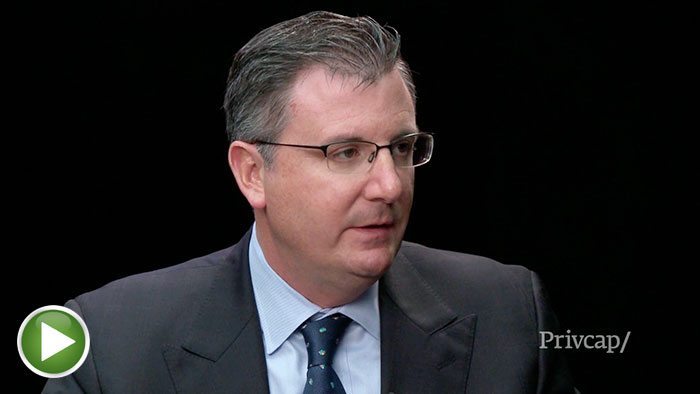The Great NAV Challenge

Erik Hirsch of Hamilton Lane predicts that capital formation will surge in the asset class, but that private equity will face a challenge in turning its collection of portfolio companies back into cash
Privcap: What is your outlook for private equity fundraising in 2014?
Erik Hirsch, Hamilton Lane: The fundraising environment has been really strong in 2013, but that gets lost in the shuffle, because there’s a focus on who doesn’t raise the capital they wanted or who’s not reaching their hard cap. In the fundraising channel, there are a number of firms that are having immense success. If you look at the global economic landscape, the reality is, this is a winning asset class. It’s providing better returns and lower volatility than the public market, and in many cases it’s providing returns with less risk. That is the perfect package for investors today. You see a large amount of inflows, and I think that trend from 2013 into 2014 will absolutely continue.
Privcap: What will be the main source of capital inflows?
Hirsch: It’s always a mix. There’s never one thing that drives inflows. Overall, plan sizes are growing, because the public markets are doing well. As a result, private equity is always pegged to this as the percentage of overall allocations grow. So the public markets largely drive growth in private equity. Secondly, there’s a lot of liquid- ity coming out of private equity portfolios and coming back to investors in the form of cash, so they’re able to reinvest that. The third piece— which is critical— is, investors’ allocations to the asset class is not staying flat; it’s actually increasing. So many LPs are dialing up their allocations, and we expect that trend continue.
Privcap: But GPs are reporting weak statistics. Why is your outlook still bullish?
Hirsch: This asset class does a poor job of data collection and data transparency. This plagues us on benchmarks, deal statistics, and fundraising. It continues to be the bane of the asset class. The broader market is not tracking nontraditional fundraising.
Privcap: How will nontraditional fundraising channels impact fundraising?
Hirsch: Five years ago, most LPs accessed private equity as a traditional LP; they went right into a fund. Today there are more choices. The traditional GP/LP relationship continues to exist, but there is the rise of separate accounts. LPs ask GPs to form a customized, unique being captured. The even bigger piece is the co-investment market. There is a lot of market chatter about LP appetite for more co-investment activity. When they go into direct deals and by- pass the fund structure, that’s also not getting captured. So our data suggest that 2013 is poised to be the fourth-best fundraising year ever, solely based on traditional fundraising. Now, if we add the separate account piece—the secondaries and the co-investments—2013 is poised to be the sec- ond- or third-best fundraising year ever. Putting it in real data context starts to paint a very different picture.
Privcap: Many private equity investments have not been exited. Why should we pay attention to this?
Hirsch: We should all keep an eye on this rise in net asset value [NAV], because it’s reporting good news: Underlying portfolio companies are actually do- ing well, and the valuations are expanding. A look at historical performance would show that we have recently reached a record level of NAV. The asset class has never converted enough NAV to what LPs want, which is cash. So as private equity expands, as capital flow and deal flow increases, and as companies continue growing, growing, growing—what you have to believe in order for this asset to continue to be successful is that the broader marketplace can absorb that NAV and can convert it into cash.
Private equity has seen more distributions in 2013 than throughout the entire history of the asset class. That’s a fantastic thing. However, as a percentage of the NAV picture, we’re nowhere near record levels. So GPs always wonder, why aren’t LPs sending all this cash back? And the answer is, it’s complicated, because while the cash is coming back, and that’s terrific, they look at it as a percentage of their overall program—and that paints a very different picture. This is one of those pieces that we spend a lot of time talking about: fundraising and distribution. Private equity doesn’t focus enough on net asset value and how to ultimately convert it to cash.
Privcap: As the market continues to gain momentum, are we heading toward a golden era for capital
formation in private equity?
Hirsch: If you’re a CIO of a big pension today, your job is very difficult. You’re having a hard time hitting your actual rate of return. You’re nervous about a massive allocation to the public markets, given recent performance and volatility. You’re struggling to hit an eight percent–plus rate of target return using a heavy fixed-income component. The real estate market continues to be sluggish, and hedge funds are disappointing. There are numerous issues, so where do you turn? Private equity has consistent performance without the fraud issues that plague other alternatives, so it’s becoming the darling of the portfolio-allocation model. This will all lead to a lot of fundraising in the next year.
Hamilton Lane is among the world’s largest LPs, overseeing approximately $170 billion in client assets. CIO Erik Hirsch shares his 2014 forecast for capital formation in the private capital markets

